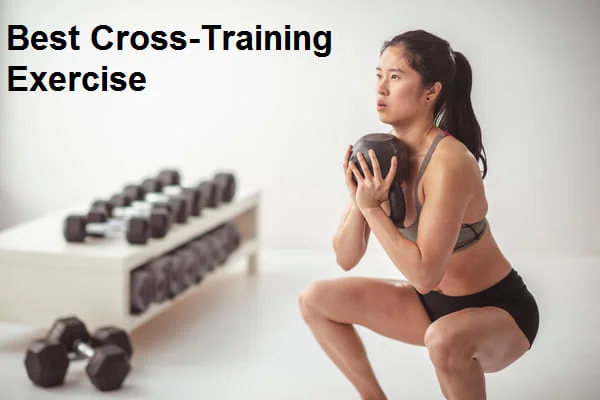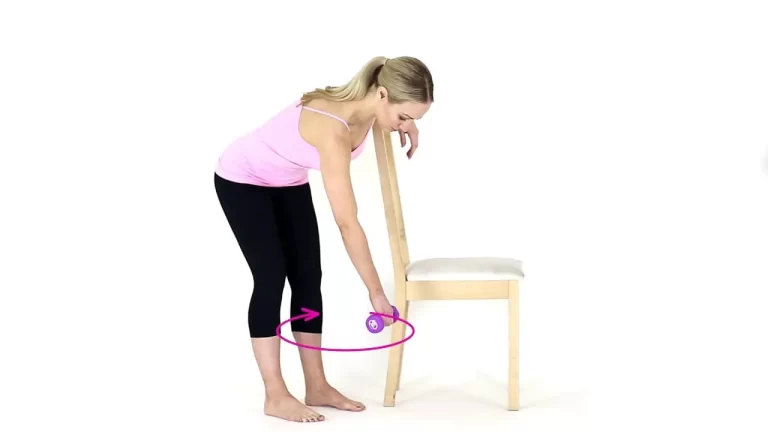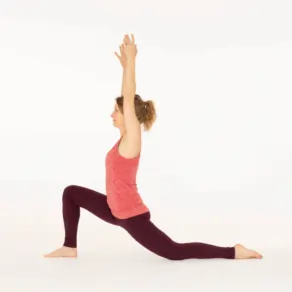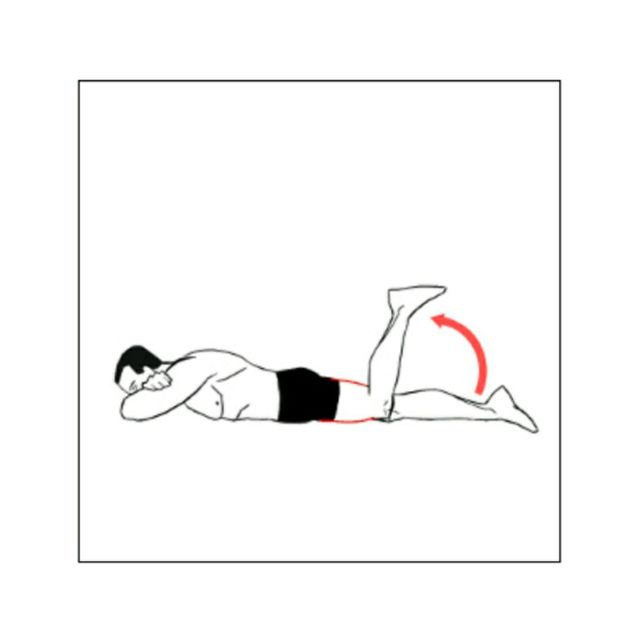Best Cross-Training Exercise For Athletes
Introduction
Cross-training is a versatile approach to fitness that involves incorporating different types of exercise into your workout routine, rather than focusing on just one form. This method can include a mix of strength training, cardio, flexibility exercises, and other disciplines, allowing for a well-rounded approach to fitness.
Cross-training not only reduces the risk of overuse injuries by targeting different muscle groups but also keeps workouts interesting and challenging. This variety helps improve overall fitness, boosts motivation, and can lead to better long-term health outcomes by balancing different aspects of physical activity.
When exercising, it is essential to incorporate a variety of exercises. Lack of variation in your workouts increases your chance of injury from overuse or recurrent strain. Strength training, aerobic exercise, and flexibility exercises like Pilates or yoga should all be a part of cross-training.
Cross-training Full-body conditioning, enhanced skill, agility, and balance, increased flexibility in training regimens, and the capacity to perform even while wounded are just a few benefits of exercise. Cross-training’s primary benefit is that it reduces the risk of injury by working out some muscle groups while resting others.
Sometimes, athletes focus all of their energy on training and becoming successful in just one sport. To enhance their performance in their main sport, some athletes opt to practice with various activities.
This approach, commonly referred to as cross-training, offers several advantages for general health and athletic performance. This article covers the definition of cross-training, its benefits, the best activities for runners, and some sample exercises.
What is Cross-Training?
An exercise program that incorporates a range of training methods unrelated to the athlete’s primary activity to build a particular fitness component is known as cross-training.
Cross-training includes exercises and routines that aren’t usually associated with a sport. The exercises help the muscles, tendons, bones, joints, and ligaments to recuperate from the constant stress of training in a particular sport.
Originally made popular by runners, cross-training is now used by triathletes, cyclists, swimmers, and many other sportsmen. When sport-specific training volume is decreased during the off-season, the majority of athletes place a higher priority on cross-training.
By using a varied resistance or angle to stimulate the muscles, these exercises help athletes maintain balance. Staying in shape while taking a break from your usual sport-specific activities is possible with cross-training.
Seasonal weather variations are another popular justification for cross-training. Some athletes may opt for indoor activities when the weather isn’t conducive to outdoor ones.
Cross-training can be done with any workout or activity that isn’t unique to a sport. One common cross-training method is weight training. Cross-training routines include swimming, cycling, running, and even skating. Gymnastics and circuit training are becoming more and more popular as cross-training methods.
Example of The Cross-Training for Athletes
The following are some common instances of cross-training:
- Runners utilize cycling as a stand-in exercise to build and preserve their endurance.
- Rowing activities target similar muscle groups and help swimmers maintain their level of fitness.
- Football players utilize running to improve their endurance or weightlifting to build muscle and strength.
- To improve their leaping ability, basketball players take a high-intensity spinning class.
- Yoga is being used by volleyball players to help them recover after training.
Advantages of The Cross-Training for Athletes
Cross-training is a popular method of working out. Whether you’re a competitive athlete or simply want to maintain your general health, there are some benefits:
- Enhances general fitness: Cross-training promotes the growth of cardiovascular endurance as well as a number of physical attributes, including muscular strength, flexibility, balance, and agility. This leads to a more thorough foundation of fitness and better overall health.
- Decreases the chance of injury: By lessening the recurrent strain on the same muscles and joints, cross-training can help avoid overuse injuries. In most cases, getting hurt won’t need you to abandon your entire training regimen or fitness program. Depending on what your doctor advises, you may be able to modify or substitute your activities.
- Prevents distraction: By keeping your workout regimen exciting and novel, diversity increases the likelihood that you’ll stick with it for a long time. This will assist you in adhering to the routine.
- Enhances performance in your major sport: Cross-training can help you develop specific abilities and physical components that will improve your performance in your major sport. Your muscles may adapt to new tasks more easily if you work on diverse muscle groups.
Types of Cross training Exercises for Athletes
Cardiovascular Workouts
Swimming: A less strenuous workout that targets the entire body. It is good for cardiovascular health and endurance, and it is easy on the joints.
Cycling: A challenging and thrilling way to increase your heart rate. You can ride a stationary bike both indoors and outside.
Running: A classic cardiovascular exercise that helps you burn calories and improves cardiovascular health.
Elliptical training: A running-like activity that doesn’t put as much strain on your joints.
Dancing: Dancing is a fun and amiable way to work out. Cardiovascular health, flexibility, and coordination can all be improved by dancing.
Hiking: Hiking is an excellent way to become fit and enjoy the outdoors. You can improve your cardiovascular health, build muscle endurance, and reduce stress by hiking.
Strength Workout for Athletes
Weightlifting: Gaining muscle bulk and strength is facilitated by adding weight to your body. It can also improve bone density and reduce your risk of injury.
Bodyweight workouts use the weight of your own body as resistance. They are an excellent non-equipment way to increase muscle and strength.
Circuit training is a type of strength training that consists of many back-to-back exercises with little rest. It’s an excellent technique to swiftly work your entire body.
Flexibility Workout for Athletes
Yoga: This type of exercise incorporates physical postures, breathing exercises, and meditation. Your strength, balance, flexibility, and mental health may all be enhanced by yoga.
Pilates: Like yoga, Pilates seeks to strengthen the core and improve flexibility. It is an excellent method for reducing back pain and improving posture.
Stretching: Stretching improves your flexibility and lowers your chance of injury. There are several different types of stretches that target all of the major muscle groups.
Rock Climbing for Athletes
Rock climbing is a challenging and rewarding sport that can improve your strength, flexibility, and coordination.
Martial arts for Athletes
A great full-body fitness and self-defense course is martial arts. Martial arts can also make you more disciplined and concentrated.
CrossFit for Athletes
CrossFit is an extreme exercise regime that combines elements of weightlifting, gymnastics, and metabolic conditioning.
How to begin cross-training for Athletes?
Before beginning any new exercise regimen, make sure it’s safe for you by speaking with your doctor. Certain activities should not be undertaken by people who have certain physical restrictions.
Any successful fitness program has these three elements:
- Cardiovascular activity: Aerobic workouts that strengthen the heart include walking, stair climbing, and skating.
- Strengthening exercise: Strength training techniques like weightlifting, circuit training, and push-ups can help build muscle tone and strength.
- Stretching Exercise: Maintaining flexible, agile muscles is aided by stretches, yoga, pilates, and other flexibility exercises.
You should engage in moderate activity for at least half an hour most days if you want to maximize the benefits of exercise. If the 30 minutes of exercise mount up during the day, you can divide it up into shorter bursts. Think about the activities that work best for you when creating a cross-training program.
Recognize that physical exercise is not just for weightlifting or jogging. Housework, dancing, and gardening also count. Ensure that the exercises on your list include strength, flexibility, and cardio activities. Select physical activities that you enjoy and find convenient.
Here are some additional pointers to get you started with cross-training:
- Be mindful of your body and pause when needed.
- Warm up and cool down before beginning any kind of physical activity.
- At the very least, cross-train two or three times per week.
- Cross-training is a great way to add variation and challenge to your exercise routine. It also helps you stay motivated and avoid boredom.
The Best Cross-Training Exercises for Athletes
Weight-lifting Cross-Training Exercises for Athletes
These weightlifting activities can assist you in reaching your endurance objective. These workouts will increase your power, core stability, and general body strength.
Deadlift

The deadlift is a classic strength training exercise that works all of your major muscle groups and targets your posterior chain, or back of your body.
The following are the steps involved in doing a deadlift:
- Place the dumbbell or barebell in front of you and stand shoulder-width apart.
- Hold the barbell underhand or overhand while bending down.
- Keep your spine aligned with your core active.
- To elevate the barbell off the foundation, thrust your hips forward.
- Hold the barbell at your hips while standing upright.
- Carefully lower the barbell to the floor.
Squat
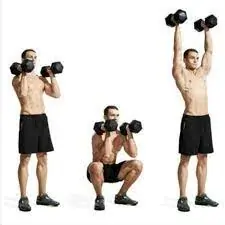
Any kind of squat tones the entire lower body, the core, and a significant amount of the posterior chain. This includes the back, front, goblet, overhead, and dumbbell versions.
- With your toes pointing outward, place your feet shoulder-width apart or a little wider.
- Pull your hips forward and flex your knees like you were sitting in a chair.
- If you are flexible, lower yourself a little bit till your thighs are parallel to the floor.
- Keep your heels bearing the same amount of weight, and try not to let your knees give way inward.
- To return to the beginning position, push through your heels and contract your glutes.
The Overhead Press
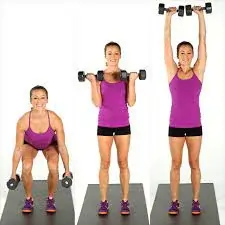
The overhead press is a very sophisticated exercise that primarily targets the upper body and requires significant lower-body bracing and core stability, despite its seemingly simple appearance.
- With your feet shoulder-width apart, place the barbell or dumbbells at your shoulders, hands facing forward.
- Extend your arms fully overhead and firmly press the weight aloft.
Single-Leg Deadlift
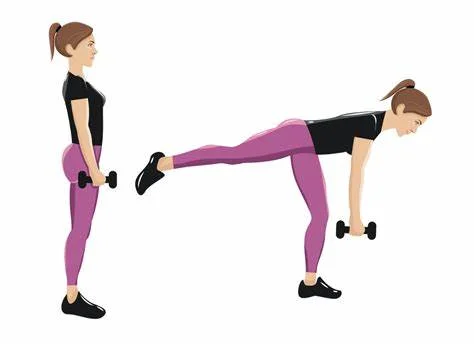
Exercises involving unilateral movement, like the single-leg deadlift with dumbbells or kettlebells, demand a lot of effort from your core to maintain a neutral spine. During endurance training, this skill results in better posture and core control.
- Stand upright with your feet hip-width apart.
- Maintaining a straight leg and pointed toes, extend one leg behind you.
- While keeping your body and back leg straight, lower your hips as though you were sitting.
- Throughout the exercise, maintain a neutral spine.
- Lower yourself until your back leg touches the floor or your hamstrings stretch.
- Return to the beginning posture by contracting your glutes and driving into your heel.
- Use the other leg to rep.
A Higher Lunge (Over Head Lunge)
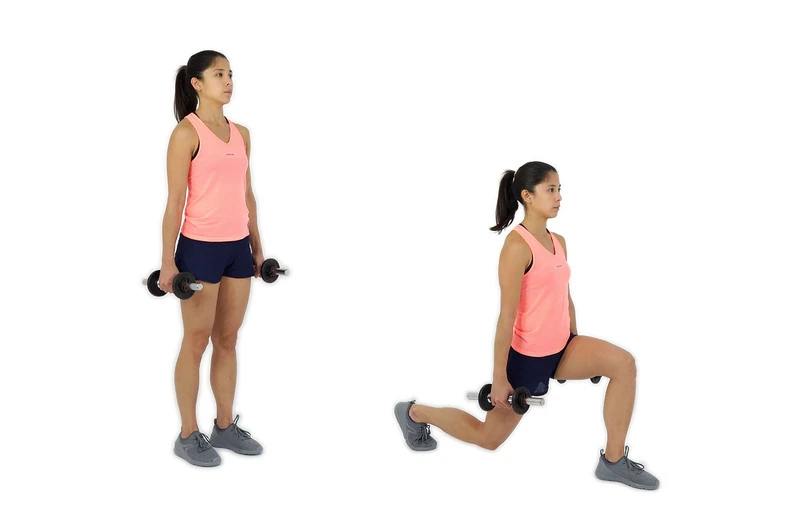
A full-body exercise that will test your muscles and increase your heart rate is the overhead lunge. Make sure a coach or trainer guides you through this more complex method if you’re new to the workout.
- Follow these instructions while standing tall, keeping your feet shoulder-width apart, and holding a weight (such as a barbell, dumbbell, or kettlebell) above your head with your arms straight.
- Use your core and maintain a neutral spine throughout the exercise.
- With one leg, take a large stride forward, lowering your hips until your back knee nearly touches the floor and your front knee is 90 degrees bent.
- Avoid letting your front knee fall inward and keep your weight evenly distributed over both feet.
- Drive through your front heel and contract your glutes to get back to the starting position.
- Use the other leg to rep.
Bodyweight Cross-Training for Athletes
Even though weight training is the most effective way to build muscle and strength, bodyweight workouts can undoubtedly be just as helpful in your cross-training journey.
Jump Up(Air Squat)
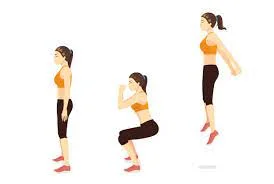
Weight is not necessary for squats to be effective. For endurance training, air squats are a no-equipment exercise that you can perform anywhere.
- With your feet shoulder-width apart and your toes pointed slightly outward, take a tall stance.
- As though you were sitting, flex your knees and drop your hips.
- Avoid letting your knees buckle inward and keep them properly aligned with your toes.
- Lower your weight when your thighs are equal to the ground, or as low as your flexibility enables.
- Return to the beginning position by contracting your glutes and pushing through your heels.
Squat in a Pistol Pose (And Variations)
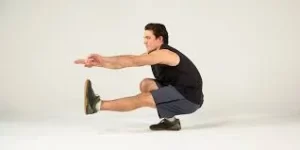
You can burn leg fat with one-leg squats without lifting any weight. Pistol squats are “genuine” single-leg squats performed without the aid of a machine. Alternate exercises can still be used to complete a variety of pistol squat variations if you lack the requisite strength, mobility, and balance. Split squats, Bulgarian split squats, and TRX-compatible pistols are a few examples.
- Stretch the other leg in the direction of you with your toes raised while maintaining your body weight on the first leg.
- Lower your hips and bend your supporting knee as if you were sitting.
- As much as your mobility lets you decrease your body weight until your thigh is parallel to the floor.
- Return to the beginning posture by contracting your glutes and pushing through your heel.
- Use the other leg to rep.
Plank
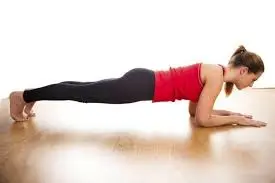
The greatest exercises for developing your core are unquestionably planks, which teach you how to brace your core to preserve your spine and build stronger core muscles.
- Start the press-up with your elbows bent at a 90-degree angle and your forearms on the floor. The elbows should be exactly over the shoulders.
- As long as your form permits, hold this position for 30 to 60 seconds.
Push-Ups
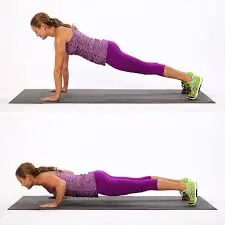
In addition to helping you build upper-body strength, push-ups teach you how to use secondary movers to accomplish a task: Pay attention to how your quadriceps and glutes flex during Plank holds and push-ups if you haven’t done them previously.
- Start in the plank posture with your hands shoulder-width apart and your torso erect from head to heels.
- Fall when your upper body is almost on the ground.
- To maintain your equilibrium, stand with your feet hip-width apart, arms out in front of you.
Pull-ups
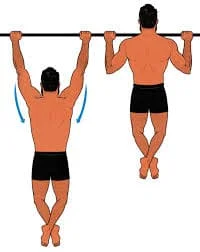
This classic but challenging exercise is perhaps the best way to build upper-body pulling strength. Although swimmers, rowers, and snow skiers benefit greatly from pull-ups, other endurance athletes may incorporate them into their cross-training regimens.
- Use an overhand hold with the pull-up bar shoulder-width apart or slightly broader for more challenge.
- Holding onto the bar, keep your arms completely extended and your torso straight.
- You can use your core to propel yourself upward by bending your elbows and drawing your shoulders back.
- Don’t sway your body and keep your chin tucked in.
- Resuming control, return to the initial stance.
Aerobic Cross-Training Workouts for Athletes
- This is the point at which endurance athletes could face challenges. Since endurance athletes already do a lot of aerobic exercise, most personal trainers won’t advise them to do any additional cardio. But your cross-training exercises shouldn’t be too similar to your main sport.
- Outside of their activity, endurance athletes can engage in a variety of cardiovascular activities. For instance, elliptical exercise, stair-steppers, and jogging may be beneficial for distance swimmers. However, rowing or cycling would be more beneficial for a runner or skier.
How Frequently Is Cross-Training Required for Athletes?
- The frequency of cross-training depends on a number of factors specific to your sport and training regimen. Trainers usually recommend two to three specific cross-training sessions per week to guarantee peak performance.
- Another option is to start or finish your normal workouts with shorter sessions that concentrate on a particular movement pattern or ability. Another option is to include cross-training exercises in your regular warm-ups.
- Finding a balance that suits you is crucial. Cross-training should complement your regular exercise, not interfere with it. Because overtraining syndrome can result from doing too much of anything, remember that cross-training still counts against your weekly total effort.
Summary
You can accomplish a number of objectives with cross-training in your strength and conditioning program, including improved cardiovascular endurance, training of underutilized muscle groups, recovery time, getting over boredom, and a decreased risk of injury.
Cross-training could provide you with the extra drive you need to succeed if you feel like you’re having trouble moving up in your sport.
FAQs
Can Injuries Be Prevented by Cross-Training?
You can lower your chance of injury by including cross-training workouts in your training routine. When engaging in high-intensity cardiovascular workouts, alignment, joint support, and body control will all be enhanced by strengthening all of your major muscle groups with weight training or bodyweight exercises.
Is Cross-Training Necessary For Runners?
A runner’s training regimen should include cross-training exercises. Muscular imbalances and overuse problems are more likely to occur when running alone. Additionally, cross-training keeps runners from reaching their optimal level of general fitness.
What Is the Ideal Length of Cross-Training Sessions?
A cross-training session has no predetermined duration. Depending on your training schedule, this could vary significantly, but for endurance athletes, two or three sessions lasting 30 to 60 minutes per week should be plenty.
Why Is Cross-Training Essential for Endurance Athletes?
Exercises that involve cross-training help endurance athletes avoid injuries, especially those caused by overuse. Cross-training also helps endurance athletes develop skills like power, explosiveness, core strength, and improved general strength that they would not be able to get through their sport alone.
References:
- Cscs, D. P. R. (2021, December 3). Cross-Training Is Effective for All Athletes. Healthline. https://www.healthline.com/health/fitness/cross-training
- Goriya, D. (2023, December 16). Best Cross-Training Exercise to Prevent Athlete Injuries. Mobile Physiotherapy Clinic. https://mobilephysiotherapyclinic.in/best-cross-training-to-build-muscle/#References
- Cross Training – OrthoInfo – AAOS. (n.d.). https://orthoinfo.aaos.org/en/staying-healthy/cross-training/
- Founder, C. M. G., & Founder, C. M. G. (2024, November 1). Garage Gym Reviews | Trusted Home Gym Equipment Reviews. Garage Gym Reviews. https://www.garagegymreviews.com/

